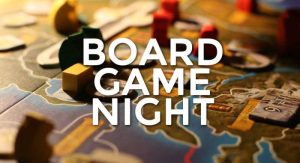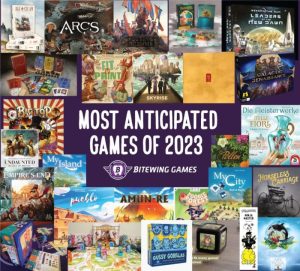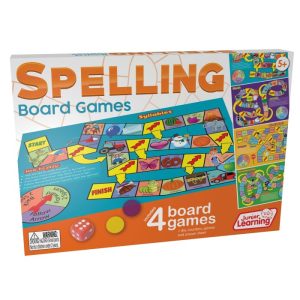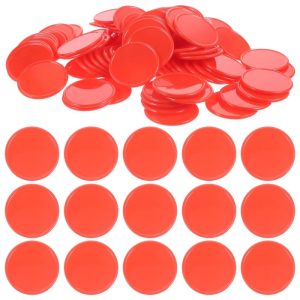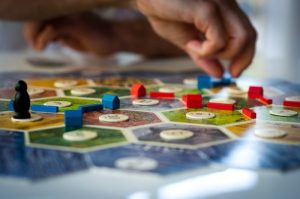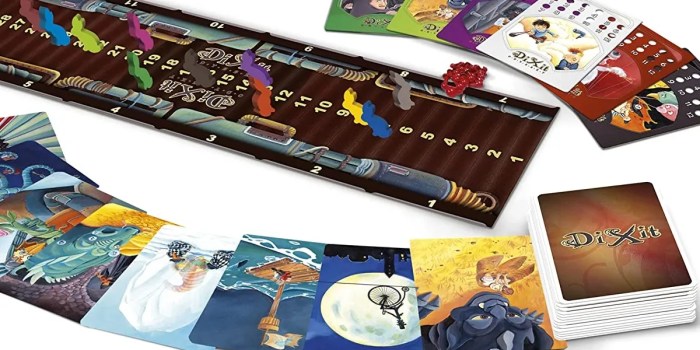
Step into the world of Party Board Games where fun and laughter reign supreme, drawing friends and family together in unforgettable moments of joy and competition.
Explore the realm of popular games, innovative components, strategic gameplay, and captivating themes that make every gathering a memorable experience.
Introduction to Party Board Games

Party board games are a lively and interactive form of entertainment that are specifically designed to be played in social gatherings. Unlike traditional board games that are often played with a smaller group or even solo, party board games are meant to be enjoyed by larger groups of people, bringing together friends, family, or even strangers in a fun and engaging way.
One of the main appeals of party board games is their ability to create a festive and inclusive atmosphere at any gathering. By encouraging interaction, communication, and friendly competition, these games help break the ice and bring people together, fostering a sense of camaraderie and shared experiences.
The Benefits of Playing Party Board Games for Social Interaction
- Enhances Communication: Party board games provide a platform for players to communicate, collaborate, and engage with one another in a light-hearted setting.
- Promotes Teamwork: Many party board games require players to work together towards a common goal, fostering teamwork and cooperation among participants.
- Facilitates Bonding: Playing party board games can strengthen relationships, create lasting memories, and deepen the bond between friends and family members.
- Encourages Creativity: Some party board games involve creative thinking, problem-solving, and quick decision-making, stimulating players’ imaginations and cognitive skills.
Popular Party Board Games
Party board games are a great way to bring friends and family together for some fun and laughter. Here are some well-known party board games that are sure to entertain:
Codenames
Codenames is a social word game where players try to guess words or phrases based on one-word clues given by their teammates. It requires teamwork, strategy, and quick thinking, making it an engaging game for groups of all sizes.
Dixit
Dixit is a storytelling game where players use beautifully illustrated cards to create imaginative and creative stories based on abstract images. Players must guess which story matches the card, leading to lots of laughter and creative thinking. It’s a perfect game for sparking creativity and imagination in a group setting.
Telestrations
Telestrations is a hilarious drawing and guessing game where players pass a word or phrase through a series of drawings and guesses. The final results often lead to unexpected and funny interpretations, making it a light-hearted and entertaining game for parties and gatherings.
Comparing Gameplay Mechanics
While Codenames focuses on word association and deduction, Dixit emphasizes storytelling and creativity. Telestrations combines drawing and guessing elements to create a unique and humorous experience. Each game offers a different gameplay style, catering to various preferences and group dynamics.
Ideal for Group Settings
These party board games are ideal for group settings because they encourage interaction, communication, and collaboration among players. They are easy to learn, accommodate multiple players, and provide opportunities for laughter and bonding. Whether you’re hosting a game night or a casual get-together, these games are sure to liven up the atmosphere and create lasting memories.
Board Game Components

Party board games typically come with a variety of components that enhance the overall gameplay experience. These components are crucial in creating a fun and engaging atmosphere for players to enjoy.
Typical Components Found in Party Board Games
- Cards: Used for various purposes such as drawing, trading, or taking actions.
- Game Pieces: Representing players on the board or used for specific game mechanics.
- Boards: Providing the playing surface where players move their pieces and interact with the game.
Importance of Quality Components
Quality components play a significant role in enhancing the gameplay experience of party board games. Durable materials, vibrant designs, and smooth functionality can elevate the overall enjoyment for players, making the game more immersive and engaging.
Innovative Components in Modern Party Board Games
- Electronic Gadgets: Incorporating apps or digital devices to enhance gameplay and introduce new mechanics.
- 3D Elements: Adding depth and visual appeal to game boards and pieces for a more interactive experience.
- Unique Tokens: Introducing custom-shaped tokens or pieces that add a thematic touch to the game.
Game Mechanics and Strategies
Party board games often incorporate a variety of game mechanics to keep players engaged and entertained. Understanding these mechanics can greatly influence the development of effective strategies and ultimately lead to success in the game.
Deduction
Deduction is a common game mechanic in party board games where players must use logic and reasoning to deduce hidden information. This can involve figuring out the identity of a character or the location of an object based on limited clues. To excel in deduction games, pay close attention to details, analyze information carefully, and make educated guesses based on the available evidence.
Storytelling
Storytelling is another popular game mechanic in party board games that encourages players to create narratives or role-play within the game. By using creativity and imagination, players can enhance their gaming experience and engage with the game world on a deeper level. To leverage storytelling mechanics, immerse yourself in the game’s theme, develop your character’s backstory, and interact with other players to weave an engaging narrative.
Bluffing
Bluffing is a strategic game mechanic that involves deceiving opponents to gain an advantage. In party board games, players may bluff about their intentions, actions, or resources to mislead others and achieve their objectives. To master the art of bluffing, maintain a poker face, observe your opponents’ behaviors for tells, and vary your strategies to keep your opponents guessing.
Tips for Effective Strategizing
- Understand the game mechanics: Familiarize yourself with the rules and mechanics of the game to make informed decisions.
- Adapt to the situation: Be flexible in your strategy and adjust your approach based on changing circumstances during the game.
- Observe your opponents: Pay attention to your opponents’ moves, behaviors, and strategies to anticipate their next actions.
- Focus on your objectives: Stay focused on your goals and prioritize actions that will help you achieve victory in the game.
- Practice makes perfect: The more you play party board games, the better you’ll become at strategizing and outsmarting your opponents.
Theme and Artwork in Board Games
Theme and artwork play a crucial role in board games, enhancing the overall gaming experience by immersing players in a particular setting or narrative. The visual elements and thematic content can greatly impact player engagement and emotional connection to the game.
Role of Theme and Artwork
The theme and artwork in board games set the tone for the entire gaming experience, establishing the world in which players will interact. Whether it’s a medieval fantasy setting, a sci-fi universe, or a historical period, the visual and thematic elements help players connect with the game on a deeper level.
- Artwork: The quality of artwork can significantly affect the appeal of a board game. Detailed illustrations, vibrant colors, and thematic consistency can draw players into the game world and make the experience more immersive.
- Theme: The theme of a board game provides context for the gameplay and helps create a cohesive experience. Whether it’s exploring a haunted house, surviving a zombie apocalypse, or building a civilization, the theme influences the mechanics, components, and overall feel of the game.
Popular Themes in Party Board Games
Party board games often feature light-hearted and engaging themes that appeal to a wide range of players. These themes are designed to encourage social interaction, laughter, and friendly competition, making them perfect for gatherings and game nights.
- Trivia: Trivia-themed party games challenge players’ knowledge on various topics, sparking interesting conversations and friendly debates.
- Mystery: Mystery-themed party games often involve solving puzzles, uncovering secrets, and working together to unravel a thrilling storyline.
- Word Play: Word-based party games focus on creativity, vocabulary, and quick thinking, offering fun and engaging challenges for players of all ages.
- Humor: Comedy-themed party games aim to bring laughter and entertainment to the table, with quirky characters, funny scenarios, and humorous gameplay mechanics.
Last Word
In a nutshell, Party Board Games offer a perfect blend of entertainment and social interaction, creating lasting bonds and cherished memories one game night at a time.
Frequently Asked Questions
Are party board games suitable for players of all ages?
Yes, many party board games are designed to be enjoyed by players of various age groups, making them perfect for family gatherings.
How many players are typically needed for party board games?
Most party board games can accommodate a range of players, but usually, they are ideal for groups of 4-8 participants.
